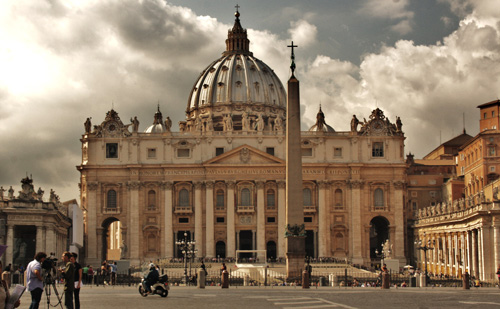HOMILY OF THE HOLY FATHER
MASS IN ST PETER’S SQUARE FOR THE CANONIZATION
OF SR MARY FAUSTINA KOWALSKA
Sunday, 30 April 2000
1. “Confitemini Domino quoniam bonus, quoniam in saeculum misericordia eius”; “Give thanks to the Lord for he is good; his steadfast love endures for ever” (Ps 118: 1). So the Church sings on the Octave of Easter, as if receiving from Christ’s lips these words of the Psalm; from the lips of the risen Christ, who bears the great message of divine mercy and entrusts its ministry to the Apostles in the Upper Room: “Peace be with you. As the Father has sent me, even so I send you…. Receive the Holy Spirit. If you forgive the sins of any, they are forgiven; if you retain the sins of any, they are retained” (Jn 20: 21-23).
Before speaking these words, Jesus shows his hands and his side. He points, that is, to the wounds of the Passion, especially the wound in his heart, the source from which flows the great wave of mercy poured out on humanity. From that heart Sr Faustina Kowalska, the blessed whom from now on we will call a saint, will see two rays of light shining from that heart and illuminating the world: “The two rays”, Jesus himself explained to her one day, “represent blood and water” (Diary, Libreria Editrice Vaticana, p. 132).
2. Blood and water! We immediately think of the testimony given by the Evangelist John, who, when a solider on Calvary pierced Christ’s side with his spear, sees blood and water flowing from it (cf. Jn 19: 34). Moreover, if the blood recalls the sacrifice of the Cross and the gift of the Eucharist, the water, in Johannine symbolism, represents not only Baptism but also the gift of the Holy Spirit (cf. Jn 3: 5; 4: 14; 7: 37-39).
Divine Mercy reaches human beings through the heart of Christ crucified: “My daughter, say that I am love and mercy personified”, Jesus will ask Sr Faustina (Diary, p. 374). Christ pours out this mercy on humanity though the sending of the Spirit who, in the Trinity, is the Person-Love. And is not mercy love’s “second name” (cf. Dives in misericordia, n. 7), understood in its deepest and most tender aspect, in its ability to take upon itself the burden of any need and, especially, in its immense capacity for forgiveness?
Today my joy is truly great in presenting the life and witness of Sr Faustina Kowalska to the whole Church as a gift of God for our time. By divine Providence, the life of this humble daughter of Poland was completely linked with the history of the 20th century, the century we have just left behind. In fact, it was between the First and Second World Wars that Christ entrusted his message of mercy to her. Those who remember, who were witnesses and participants in the events of those years and the horrible sufferings they caused for millions of people, know well how necessary was the message of mercy.
Jesus told Sr Faustina: “Humanity will not find peace until it turns trustfully to divine mercy” (Diary, p. 132). Through the work of the Polish religious, this message has become linked for ever to the 20th century, the last of the second millennium and the bridge to the third. It is not a new message but can be considered a gift of special enlightenment that helps us to relive the Gospel of Easter more intensely, to offer it as a ray of light to the men and women of our time.
(to continue reading, please see here)












